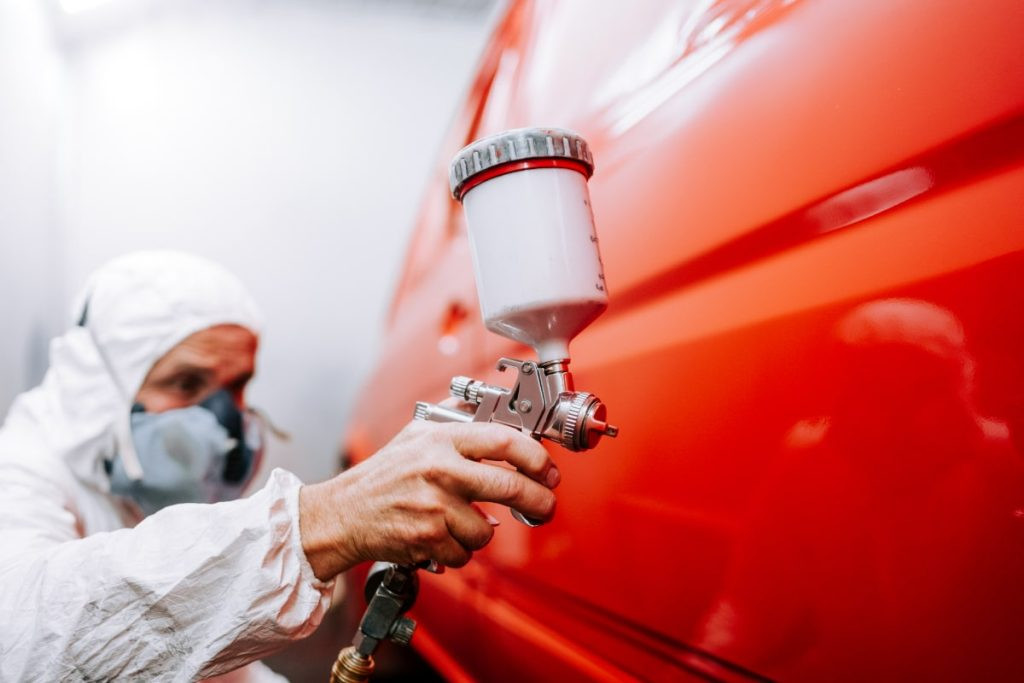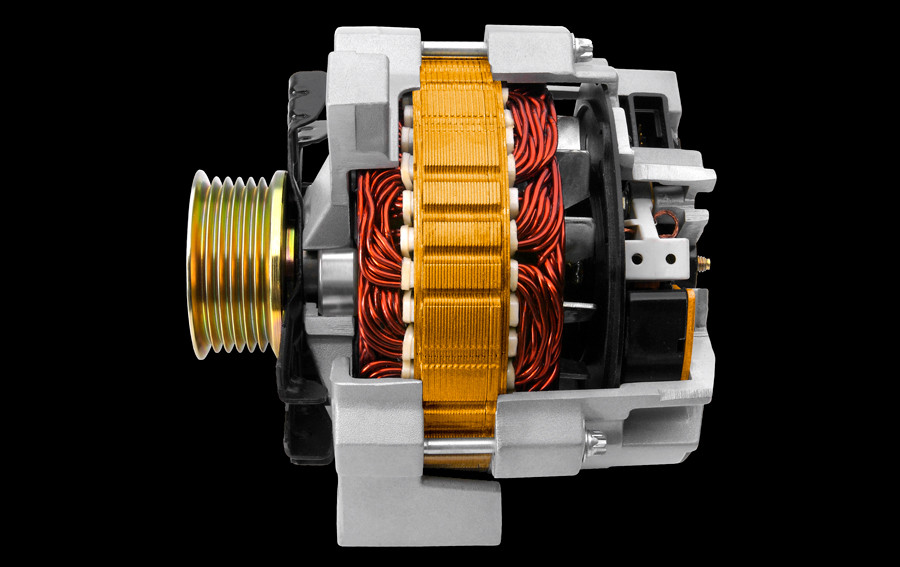How To Fix Upholstery In Car Roof: A Comprehensive Guide

Is your car’s headliner sagging, detracting from its interior appeal? Don’t worry, CARDIAGTECH.NET is here to guide you on how to fix upholstery in your car roof effectively and affordably. Discover proven methods to restore your vehicle’s headliner, enhancing its aesthetics and comfort, all while saving money. Explore techniques using headliner adhesives, twist pins, and steam cleaners, along with preventative measures to prolong the life of your car roof upholstery.
1. Understanding the Car Headliner
A car headliner, also known as headlining, is the fabric attached to the interior roof of a vehicle. It serves multiple purposes:
- Providing a smooth, finished look to the car’s interior.
- Absorbing noise to create a quieter cabin.
- Insulating the interior, helping to maintain a comfortable temperature.
Typically, a headliner consists of several layers, including a foam backing (often polyurethane) adhered to a headliner board. This foam layer provides cushioning and insulation. According to research from the National Highway Traffic Safety Administration (NHTSA), interior components like headliners contribute to overall vehicle safety by reducing noise and vibration, enhancing driver focus.
 Car headliner is a fabric that is secured to the roof framing
Car headliner is a fabric that is secured to the roof framing
Alt Text: Close-up view of a car headliner, showing its fabric texture and attachment to the roof frame, highlighting its role in interior aesthetics and insulation.
2. Common Causes of Sagging Headliners
A sagging headliner can be an eyesore and a sign of underlying issues. Understanding the causes can help you take preventative measures. Here are the primary reasons why car headliners sag:
- Heat and Sunlight: Excessive heat can degrade the adhesive bonding the fabric to the backing board. Prolonged exposure to sunlight, especially in hot climates, accelerates this process. Studies by the Society of Automotive Engineers (SAE) have shown that high temperatures inside a parked car can reach levels that cause significant material degradation.
- Moisture: Humidity and leaks can seep into the headliner, causing the foam backing to absorb moisture and lose its structural integrity. This can lead to warping and sagging.
- Poor Installation: If the headliner wasn’t properly installed initially, with insufficient glue or incorrect techniques, it’s more likely to sag prematurely.
- Physical Damage: Children or pets can inadvertently damage the headliner by scratching or pulling at it, putting physical strain on the fabric and adhesive.
3. Step-by-Step Guide: Fixing a Sagging Headliner Without Removal
Replacing a headliner can be costly, especially for older vehicles. Fortunately, you can often repair a sagging headliner without removing it completely. Here’s a detailed guide:
3.1. Gathering Your Supplies
Before you begin, gather the necessary materials and tools:
- Headliner Adhesive: Specifically designed for automotive headliners, available at auto parts stores or CARDIAGTECH.NET.
- Spray Bottle: For applying the adhesive evenly.
- Sequin Pins or Twist Pins: To temporarily hold the fabric in place.
- Steam Cleaner (Optional): For softening the old adhesive.
- Paint Roller or Soft Cloth: For smoothing the fabric.
- Safety Glasses and Gloves: To protect yourself during the repair.
- Cleaning Solution: To clean the headliner surface.
3.2. Preparing the Area
- Clean the Headliner: Use a mild cleaning solution and a soft cloth to gently clean the sagging area. Remove any loose debris or dirt.
- Protect the Interior: Cover the seats and other interior surfaces with drop cloths or plastic sheeting to protect them from adhesive overspray.
- Ventilate the Vehicle: Open the car doors and windows to ensure adequate ventilation while working with adhesives.
3.3. Applying Adhesive
- Spray Adhesive: Apply a light, even coat of headliner adhesive to both the back of the sagging fabric and the corresponding area on the headliner board. Follow the manufacturer’s instructions for the adhesive.
- Allow Tack Time: Let the adhesive sit for the recommended tack time (usually a few minutes) until it becomes tacky. This allows for a stronger bond.
3.4. Reattaching the Fabric
- Carefully Reattach: Gently press the fabric back onto the headliner board, starting from the center and working your way outwards.
- Smooth Out Wrinkles: Use a paint roller or a soft cloth to smooth out any wrinkles or bubbles in the fabric. Apply gentle pressure to ensure good adhesion.
3.5. Securing with Pins (Optional)
- Use Pins: If the fabric is still loose or sagging, use sequin pins or twist pins to temporarily hold it in place. Insert the pins through the fabric and into the headliner board.
- Arrange Pins: Arrange the pins in a visually appealing pattern. Leave the pins in place for several hours or overnight to allow the adhesive to fully cure.
3.6. Using a Steam Cleaner (Optional)
- Apply Steam: If the fabric is heavily wrinkled or the old adhesive is stubborn, use a steam cleaner to gently soften the adhesive. Hold the steam cleaner a few inches away from the fabric and move it slowly across the surface.
- Reattach and Smooth: Immediately after steaming, reattach the fabric and smooth it out with a paint roller or soft cloth.
3.7. Final Touches
- Remove Pins: Once the adhesive has fully cured, carefully remove the pins.
- Inspect the Repair: Inspect the repaired area for any remaining wrinkles or loose spots. Reapply adhesive and smooth the fabric as needed.
- Clean Up: Remove any drop cloths or plastic sheeting and clean up any adhesive residue.
4. Alternative Methods for Fixing Sagging Headliners
In addition to gluing, several other methods can be used to repair a sagging headliner without removing it:
4.1. Clear-Headed Twist Pins (Saggy Stoppers)
These inexpensive pins are designed specifically for headliner repair. They have a clear plastic head that blends in with the fabric and a corkscrew-like shaft that grips the headliner board.
- How to Use: Simply twist the pins into the sagging fabric and into the headliner board. They provide a secure hold without damaging the fabric.
4.2. Fabric Glue and Tucking
This method is suitable for small areas of sagging, particularly around the edges of the headliner.
- How to Use: Apply a small amount of fabric glue to the back of the sagging fabric and carefully tuck it back into place using a small tool, such as a plastic trim removal tool.
4.3. Double-Sided Tape
For minor sagging, double-sided tape can provide a temporary fix.
- How to Use: Cut small strips of double-sided tape and attach them to the back of the sagging fabric. Press the fabric back onto the headliner board.
5. Preventing Headliner Sagging
Prevention is always better than cure. Here are some tips to help prevent your car’s headliner from sagging:
- Park in the Shade: Whenever possible, park your car in the shade to reduce exposure to direct sunlight and heat.
- Use a Sunshade: Use a sunshade to protect the interior of your car from the sun’s rays, especially during hot weather.
- Maintain a Clean Interior: Regularly clean your car’s interior to remove dust, dirt, and other debris that can contribute to headliner degradation.
- Address Leaks Promptly: Repair any leaks in your car’s roof or windows to prevent moisture from damaging the headliner.
- Limit Physical Contact: Keep children and pets from pulling or scratching at the headliner.
- Consider a Headliner Protector: Install a headliner protector to shield the fabric from wear and tear.
6. When to Consider Professional Replacement
While DIY repairs can be effective, there are situations where professional headliner replacement is the best option:
- Extensive Sagging: If the headliner is sagging across a large area or is severely damaged, replacement may be necessary.
- Damaged Headliner Board: If the headliner board itself is damaged, it will need to be replaced along with the fabric.
- Complex Installations: Vehicles with complex headliner designs or integrated features, such as sunroofs or overhead consoles, may require professional installation.
According to data from automotive repair websites, the average cost to replace a car’s headliner ranges from $300 to $1000, depending on the vehicle model and the complexity of the installation.
7. Cost of Sagging Headliner Replacement
The cost of replacing a sagging headliner varies depending on several factors, including the type of vehicle, the complexity of the headliner design, and the labor rates in your area. Here’s a general cost breakdown:
| Vehicle Type | Average Replacement Cost |
|---|---|
| Sedan/Hatchback/Coupe | $300 – $750 |
| SUV/Crossover (with sunroof) | $500 – $900 |
| Luxury Vehicle (high-quality) | $1,000 – $6,000 |
These prices include both the cost of the headliner material and the labor charges for installation.
8. The Importance of Quality Headliner Materials
When repairing or replacing a headliner, it’s crucial to use high-quality materials. Here are some factors to consider:
- Fabric Type: Choose a durable, stain-resistant fabric that matches your car’s interior. Common options include suede, velour, and vinyl.
- Foam Backing: Ensure that the foam backing is of high density and is resistant to heat and moisture.
- Adhesive: Use a headliner adhesive that is specifically designed for automotive applications and is resistant to high temperatures.
Investing in quality materials will ensure a longer-lasting and more professional-looking repair.
9. Why Choose CARDIAGTECH.NET for Your Automotive Needs
At CARDIAGTECH.NET, we understand the importance of maintaining your vehicle’s appearance and functionality. We offer a wide range of automotive tools and supplies, including headliner adhesives, repair kits, and cleaning products. Here’s why you should choose us:
- Quality Products: We source our products from trusted manufacturers to ensure durability and performance.
- Expert Advice: Our team of automotive professionals can provide expert advice and guidance on headliner repair and other automotive projects.
- Competitive Prices: We offer competitive prices on all of our products.
- Convenient Shopping: Shop online from the comfort of your home and have your supplies delivered right to your door.
- Customer Satisfaction: We are committed to providing excellent customer service and ensuring your satisfaction.
10. Call to Action: Contact CARDIAGTECH.NET Today
Is your car’s headliner sagging? Don’t let it detract from your vehicle’s appearance any longer. Contact CARDIAGTECH.NET today for expert advice and quality products to help you fix your headliner effectively and affordably. Our team is ready to assist you with all your automotive needs.
Address: 276 Reock St, City of Orange, NJ 07050, United States
WhatsApp: +1 (641) 206-8880
Website: CARDIAGTECH.NET
Let CARDIAGTECH.NET be your partner in maintaining your vehicle’s interior and ensuring a comfortable and stylish driving experience. Contact us now to explore our range of automotive tools and supplies and receive personalized assistance from our knowledgeable team. We’re here to help you get your car looking its best!
FAQs
1. How do I know if my car ceiling is sagging?
Signs of a sagging car ceiling include:
- A cracking sound when the car is shaking or when slamming doors.
- Drooping plasterboard sheeting or cornice.
- Visible cracks.
- Tiny circles or blisters forming as lines produced by nails or screws.
2. Is it OK to fix the headliner sagging myself?
Yes, you can fix minor sagging issues yourself. Headliner repair kits are readily available online and at auto parts retailers. These kits typically include small tools to secure the headliner to the foam backing.
3. Can I paint a headliner?
While it might seem appealing, painting a headliner is not recommended. It requires extensive preparation to avoid getting paint on the trim and glass. Additionally, the paint is unlikely to withstand the temperature-related expansion and contraction within the car’s interior.
4. Does car insurance cover the cost of car headliner replacement?
Unfortunately, most car insurance policies do not cover interior upholstery, trim, and headliner damage unless it is a result of a covered event, such as a collision or natural disaster.
5. What is the best adhesive for headliner repair?
The best adhesive for headliner repair is a high-temperature-resistant spray adhesive specifically designed for automotive headliners. These adhesives provide a strong, durable bond that can withstand the heat and humidity inside a car.
6. How long does it take to fix a sagging headliner?
The time it takes to fix a sagging headliner depends on the extent of the damage and the method used. A simple repair using adhesive or twist pins may take only a few hours, while a more extensive repair or replacement could take a full day or longer.
7. Can I use regular glue for headliner repair?
No, regular glue is not suitable for headliner repair. It is not designed to withstand the high temperatures and humidity inside a car and may not provide a strong enough bond.
8. How do I clean a car headliner without damaging it?
To clean a car headliner without damaging it, use a mild cleaning solution and a soft cloth. Gently blot the headliner to remove dirt and stains, being careful not to rub too hard or saturate the fabric.
9. What are the benefits of replacing a sagging headliner?
Replacing a sagging headliner can improve the appearance of your car’s interior, increase its resale value, and create a more comfortable and enjoyable driving experience.
10. Where can I buy headliner repair supplies?
You can buy headliner repair supplies at auto parts stores or online retailers like CARDIAGTECH.NET. We offer a wide range of headliner adhesives, repair kits, and cleaning products to help you fix your sagging headliner.



